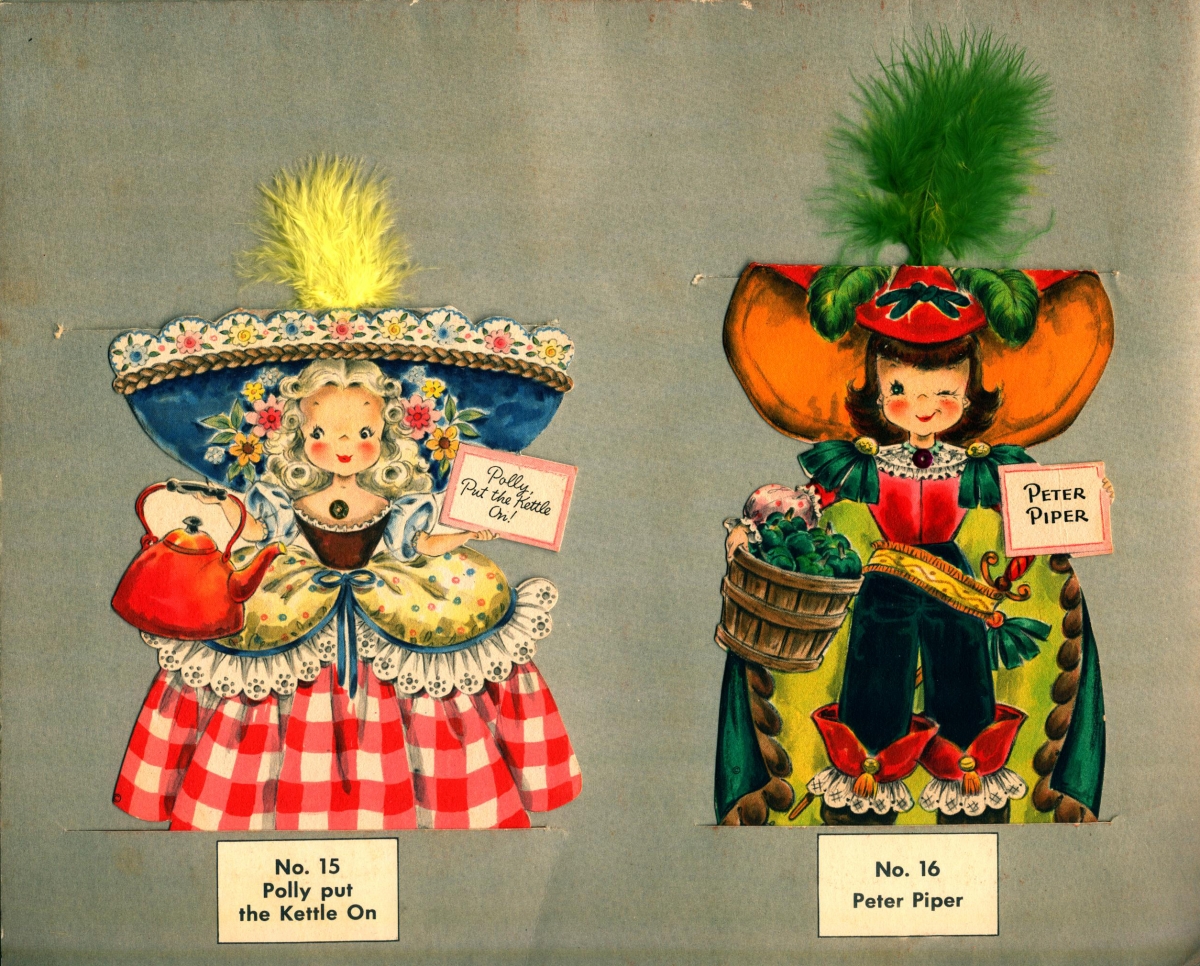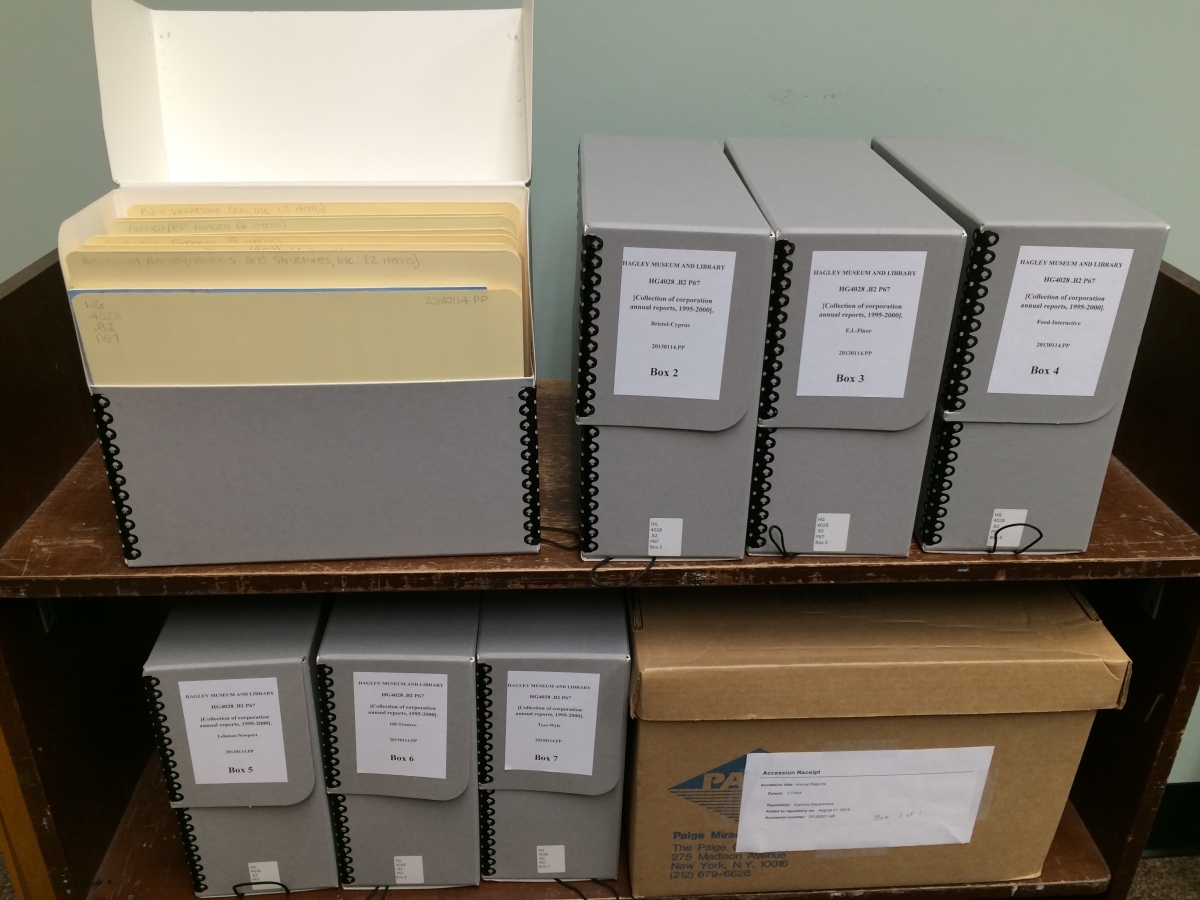When the Published Collections Department purchased a charming set of collectible Hallmark greeting cards, I seized the moment to employ an alternate cataloging routine. We receive at Hagley many items printed on a single sheet of paper, folded into an ephemeral publication such as a pamphlet or price list. Typically they receive full item-level description. So conceivably each one of these greeting cards could be cataloged as a separate item: a folded sheet of paper, die-cut in the shape of a doll, illustrated in color, fashioned after a storybook character with the design attributed to Vivian Trillow Smith. But since our acquisition includes the 1948 album as well as all sixteen inserts, the situation presents the perfect opportunity to apply collection-level cataloging.
With this decision, the physical description shifts from the single-sheet paper doll to the album as a whole. The bibliographic record now reflects details of a volume consisting of four double leaves with sixteen pocket inserts. Specific contents are noted in a list of the entire cast of characters from Little Bo Peep to Peter Piper as illustrated below.

Hallmark Dolls cut cataloging time when treated as a collection.
Significant time is saved by cutting the production of sixteen MARC records down to one. This approach is one of our departmental tactics to enter new titles quickly into the online catalog and to place acquired material promptly into circulation. By judiciously modifying our methods to realize more product, less process, we strive to avoid building a backlog of uncataloged material.
The arrival of three graduate students this spring has helped to advance this strategy even further. As a placement for practicum experience, our department identified several untapped yet manageable accessions, including the Peter Popper collection of annual reports, the Weinrichter collection of exhibition pamphlets, and the Wright collection of Expo ephemera. We then provided guidance in processing them. Students worked through sorting the papers, compiling an inventory, arranging the material in archival folders, and ultimately creating a collection-level bibliographic record for our online catalog.

Practicum makes perfect the processing of Peter Popper papers.
As a result, researchers may now access approximately 5 linear feet of published material relating to American corporations in the 1990’s, and travel to World’s Fairs in the 1960’s and 1970’s, that otherwise may have languished in wait for item-level treatment. Minimal processing is one of the tools we can use to promote maximum use of publications in our Stacks, where the likes of Peter Piper meet the likes of Peter Popper.
Alice Hanes is the Technical Services Librarian in the Published Collections Department at Hagley.
